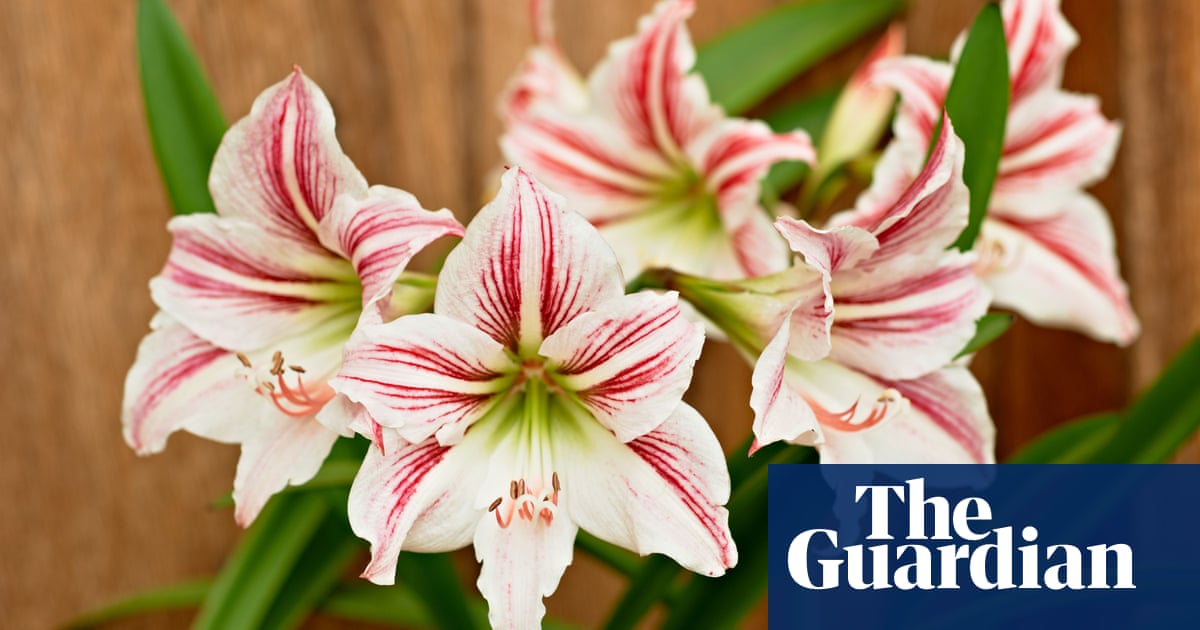
ll is grey today at Cody Dock. The Lea – London’s second river, which snakes its way through the east of the city – is a greenish grey. Its banks are a muddy grey. The vast sky is a cotton wool grey. And the high-rises on the distant horizon are a bluey grey.
So the reds, yellows, oranges and greens that arch across the Lea feel like a sign of hope – a splash of colour against that samey palette. Hope is very much what the artist responsible for this burst of colour represents, although it’s fair to say she would have been stunned to see her drawing translated into vinyl and stretched across 60 metres (200ft) of bridge, six decades after her death.
Madge Gill, who was born in 1882 in Walthamstow, six miles north of here, was that rarest of 20th-century creatures: a working-class woman who became an artist who achieved what passed for success for females of her time. Her work was exhibited at the Whitechapel Gallery, not too far away, and was collected by the artist Jean Dubuffet, among others. A piece by her is included in the current Dubuffet show at the Barbican in London. Quite how she accomplished her career continues to astound – but what is not in doubt, as an outdoor trail of Gill’s work welcomes its first guests this weekend, is her right to be here.
The “here” is interesting. Gill’s creations are mostly works of painstaking detail on paper, many in biro: she worked with what she had to hand, and was self-taught. Photographs show her unravelling some of her larger pieces in her garden, suggesting a link with the landscape that the current show, Nature in Mind, has picked up on.
The genesis for this outdoor exhibition – 20 reproductions placed in five settings near the Olympic Park – goes back to a day in 2013 when town planner Clive Dutton chanced upon 1,200 Gill pieces in the archives of Newham council, to which her family had left her work, after she died, 60 years ago, in 1961. Dutton could hardly contain his excitement: his daughter Sophie remembers him phoning her to say he had found the most amazing artworks.
Dutton and arts curator Megan Piper joined forces to set up The Line, an art walk along the Lea through Newham, past such gems as a hunting lodge used by Henry VIII, and the oast-like Three Mills, one of the most historic and picturesque industrial landmarks in London. When Dutton died, Sophie took up the baton: she curated this show, which will remain in place until at least 2023.
It wasn’t just about carrying on her father’s work: Gill’s story had taken a hold in her heart. Because the more she researched her life, the more she realised the extent to which Gill had painted her way out of grief and disaster, trauma and adversity. It was in the aftermath of the greatest difficulties of her life that she began to create her art. Born what in those days was called “illegitimate” in the Victorian East End, she was sent to an orphanage aged nine, even though her mother was alive. Then, at 14, she was shipped to Canada to work as a domestic servant.
Little is known of her life there, but the fact that four years later she found a way back to England suggests it was far from joyous. Her subsequent marriage, to her cousin, brought more heartache: she had three sons, one of whom died of flu during the 1918 pandemic. The following year, her only daughter was stillborn. That unnamed baby girl now seems very present at Star Lane where a reproduction of Red Women, Gill’s 1949 mural-scale artwork, greets visitors as they leave the train station. The work is a sea of faces, some young, some old, but all with a kind of blankness that suggests unfulfilled lives
It’s in the final installation, though, that I feel I come closest to Gill, who worked without much expectation of recognition or success, and believed her talents were controlled by a supernatural spirit guide she called Myrninerest. They’re a series of reproductions of black and white pen and ink drawings and, as you approach the underpass where they’re located, the pieces remain hidden until you’re virtually upon them.
But what marvels they are: you can almost Gill’s determination to keep herself alive, to make sense of all her suffering, in the firm, deliberate lines that conjure something impossibly complex, yet leave you with an image that’s pleasingly balanced and unmistakably optimistic, however grey the day is.
More information on Madge Gill: Nature in Mind and The Line, with a downloadable map other artworks, at the-line.org












